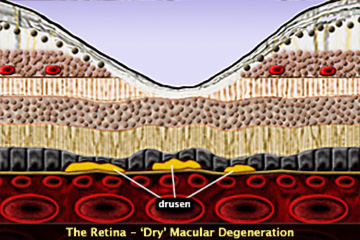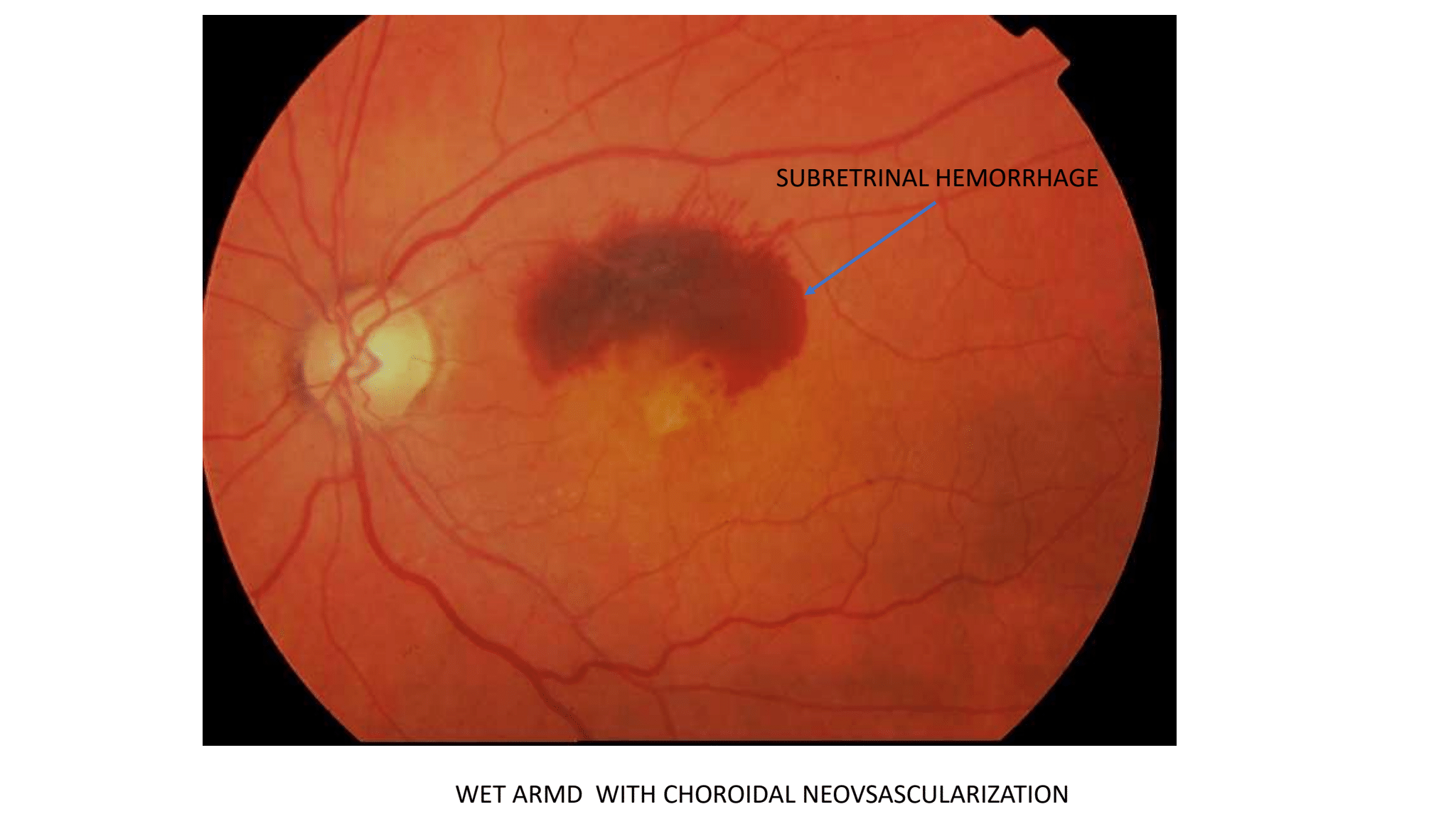Age-Related Macular Degeneration (ARMD)
Age-Related Macular Degeneration (AMD)
 AMD is the leading cause of legal blindness in the US, affecting around 10 million people. Early symptoms include a reduction in reading speed, inability to read fine print, and skipping letters or lines when reading. Later symptoms can include distortion of straight lines or dark or missing areas in the central vision.
AMD is the leading cause of legal blindness in the US, affecting around 10 million people. Early symptoms include a reduction in reading speed, inability to read fine print, and skipping letters or lines when reading. Later symptoms can include distortion of straight lines or dark or missing areas in the central vision.
The macula is the central part of the retina and allows us to read fine print clearly and see colors vividly. It is this area of the retina that deteriorates in AMD. There are 2 forms of AMD. Everyone who has macular degeneration starts out with the dry type and 10-20% progress to the wet type over the course of a lifetime. Macular degeneration in its most severe forms almost never causes total blindness but can lead to loss of central vision. It is a disease that, left untreated, leaves older persons unable to read and drive. However, nearly all patients will still have enough vision to care for themselves.
Dry Macular Degeneration

As the macula ages, the retinal cells cannot remove their own waste products and deposits of these waste products, called drusen, build up under the retina. Drusen, when large in number and size, are the first signs of macular degeneration that an eye doctor sees on examination. Collections of drusen can crowd out other cells in the retina and can cause further damage to the retina and loss of the light-collecting cones. When too many cells are lost, blind spots begin to develop. These areas of atrophy progress slowly over years but can result in severe central vision loss. Recently, a new therapy, Syfovre, has been approved that can slow down progression of Dry AMD. We also know that two large studies (Age-Related Eye Disease Study) have demonstrated some benefit from taking a specific combination of vitamins and minerals:
- Vitamin C (500 mg)
- Vitamin E (400 IU)
- Lutein (10 mg)
- Zeaxanthin (2 mg)
- Zinc (80 mg)
- Copper (2 mg)
Wet Macular Degeneration
 Some (10-20%) of patients with dry degeneration will develop abnormal blood vessels that grow under the retina and bleed or leak fluid. Patients often have abrupt vision loss with distortion of straight lines, or a stationary, dark or blurry spot in the central vision of one eye. The vision can worsen rapidly in a few days or weeks. Historically, treatment for wet AMD was limited to laser but since 2005, anti-VEGF (vascular endothelial growth factor) therapy has offered new hope for a previously blinding disease. With treatment, we usually see some improvement in vision and we can slow down the normal pace of vision loss.
Some (10-20%) of patients with dry degeneration will develop abnormal blood vessels that grow under the retina and bleed or leak fluid. Patients often have abrupt vision loss with distortion of straight lines, or a stationary, dark or blurry spot in the central vision of one eye. The vision can worsen rapidly in a few days or weeks. Historically, treatment for wet AMD was limited to laser but since 2005, anti-VEGF (vascular endothelial growth factor) therapy has offered new hope for a previously blinding disease. With treatment, we usually see some improvement in vision and we can slow down the normal pace of vision loss.
